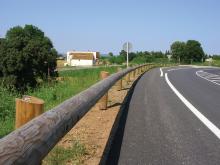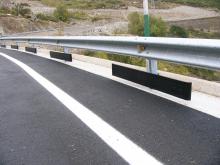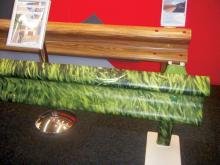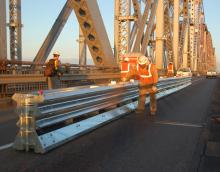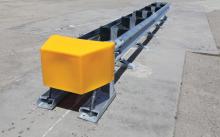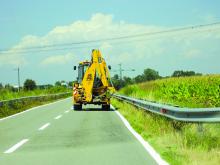Barrier Systems says that its new tensioned barrier offers high energy absorbing capabilities in head-on collisions. The company says that this is because the X-Tension technology is a tension-based solution rather than compression-based. The new range delivers good performance in these applications, as energy is absorbed with resistance at the impact head rather than being transferred down the rail as occurs with other systems. Even high-angle (15° during testing) impacts on the nose resulted in the vehicl

The company also has an ABSORB 350 product that is non-redirective and is designed as a gating crash cushion. The system offers a reliable and easy method of protecting the ends of concrete barriers and can be attached to the end of permanent or portable concrete barriers, without the need to anchor the system to the roadway surface.
At 610mm wide, it is suited for narrow areas where road and workspace is limited. ABSORB 350 is easy to install and is easier to restore after an impact than other non-redirective, gating crash cushions. Tests show the product meets the rigorous requirements of NCHRP Report 350, Test Levels 2 (70 km/h) and 3 (100 km/h). This system is designed for use on narrow hazards for exits, wide medians, edge of road locations and locations.
Meanwhile the BarrierGuard 800 is a rapidly deployable Steel Safety Barrier for use in work zones or as a permanent installation. The system offers extremely attractive costs compared to portable concrete barrier since 180m can be delivered to a job site in one truck load. The system is also quick to assemble on site due to its connection system which uses only one bolt, allowing a crew of three to install up to 300m/hour. Featuring a step profile the barrier can redirect errant vehicles while causing little damage to either alnd also meets the tough NCHRP Report 350, Test Level 4.
Lastly, the firm's PaveGuard system offers continuous positive barrier protection during paving operations for workers, motorists and equipment. The system is on wheels and is pulled as the project advances and can be attached to a vehicle when it has to be moved. The system can be loaded and unloaded without the need for special equipment and does not require electrical power or sophisticated control systems.

